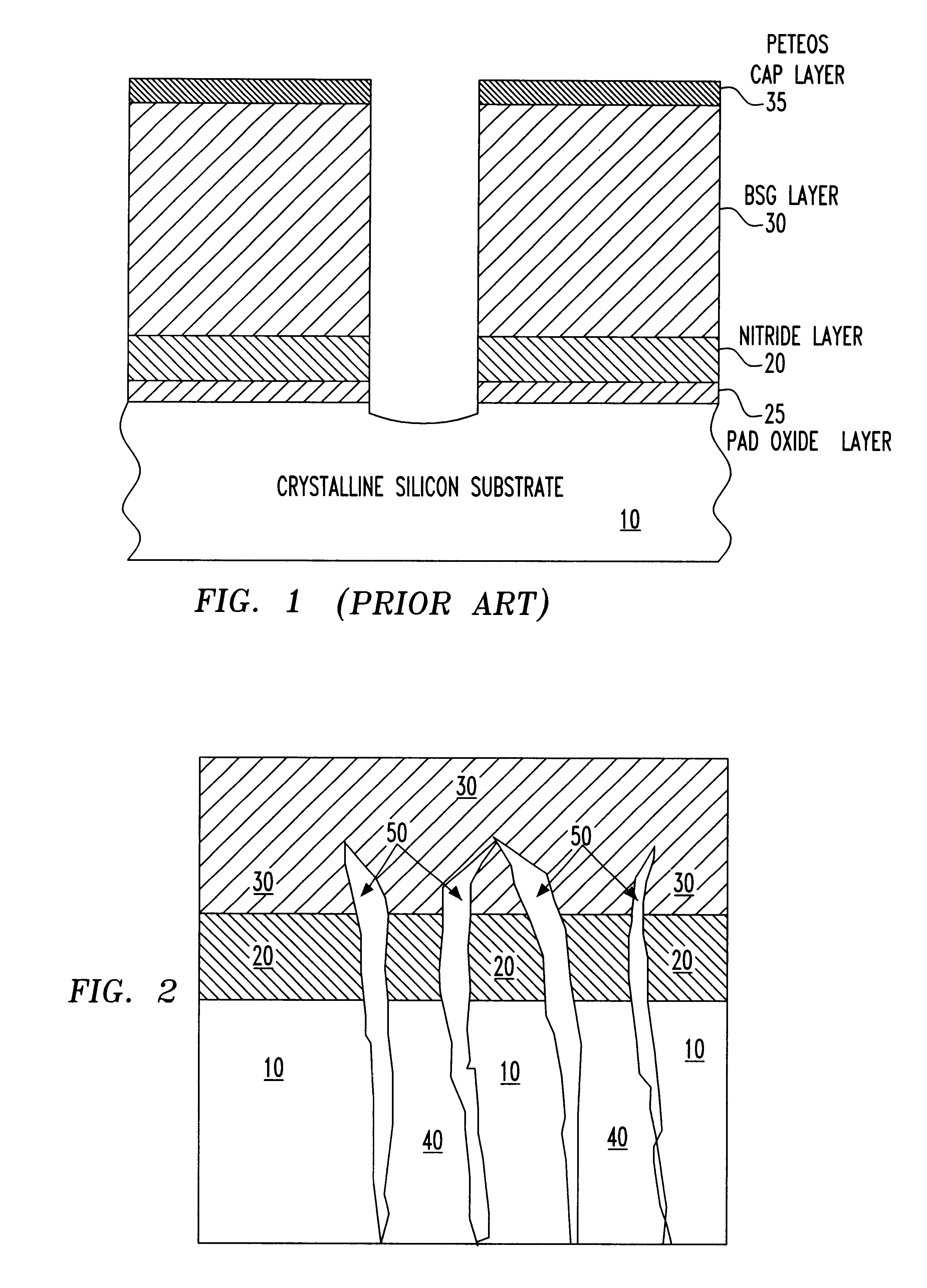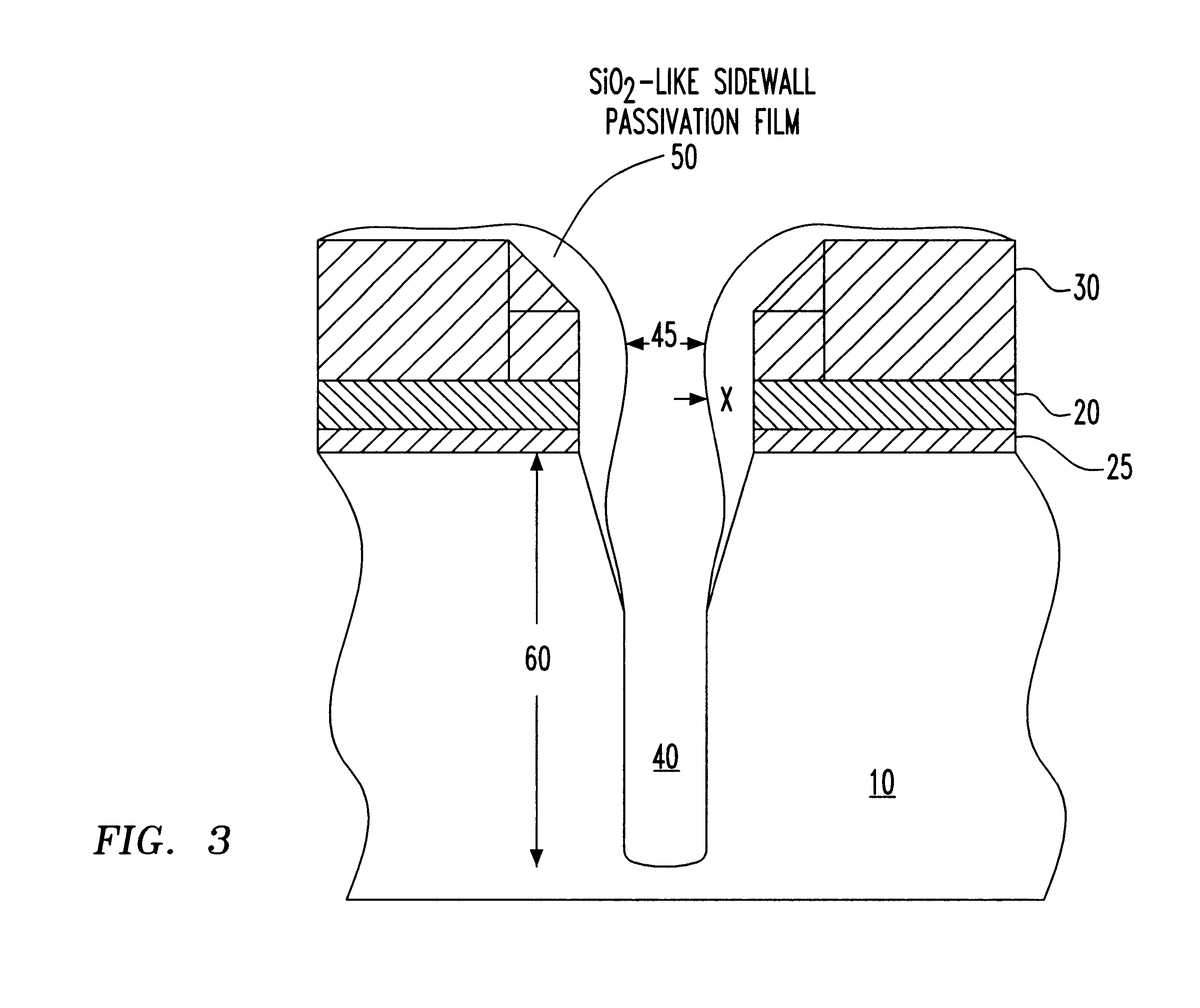Method of reducing RIE lag for deep trench silicon etching
a deep trench silicon and etching technology, applied in the direction of transistors, basic electric elements, electric devices, etc., can solve the problems of significant blockage, difficult to control the passivation of the dt side wall (sw) passageway, and the rie process is relatively complex, so as to reduce or at least minimize the rie lag
- Summary
- Abstract
- Description
- Claims
- Application Information
AI Technical Summary
Benefits of technology
Problems solved by technology
Method used
Image
Examples
Embodiment Construction
.
Referring back to the primary object of the invention referring to the RIE lag defined as neutral and ion fluxes at the trench bottom due to the constriction of the trench opening by side wall film deposition, it is known that since the thickness of the side wall film is time dependant, thereby affecting the trench depth, etching deeper trenches aggravates this problem. Since most of the trenches so far have been of smaller aspect ratio (<5:1), the proposed solution has not been so far disclosed. The main contributors limiting DT depth are, therefore, the ion-neutral fluxes and the time dependent formation of side wall passivation.
The uncovering of this second contributor has led to inventing a solution that minimizes or eliminates the RIE lag problem, originating from this second factor. The process flow of the invention is shown below with each process step shown schematically in FIGS. 1-6 and is discussed in detail in the following steps 1-5.
In the preferred embodiment, the foll...
PUM
 Login to View More
Login to View More Abstract
Description
Claims
Application Information
 Login to View More
Login to View More - R&D
- Intellectual Property
- Life Sciences
- Materials
- Tech Scout
- Unparalleled Data Quality
- Higher Quality Content
- 60% Fewer Hallucinations
Browse by: Latest US Patents, China's latest patents, Technical Efficacy Thesaurus, Application Domain, Technology Topic, Popular Technical Reports.
© 2025 PatSnap. All rights reserved.Legal|Privacy policy|Modern Slavery Act Transparency Statement|Sitemap|About US| Contact US: help@patsnap.com



